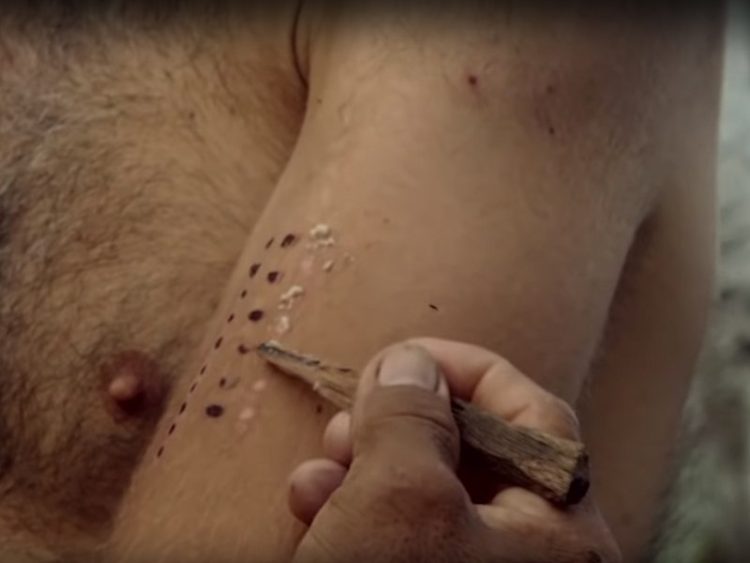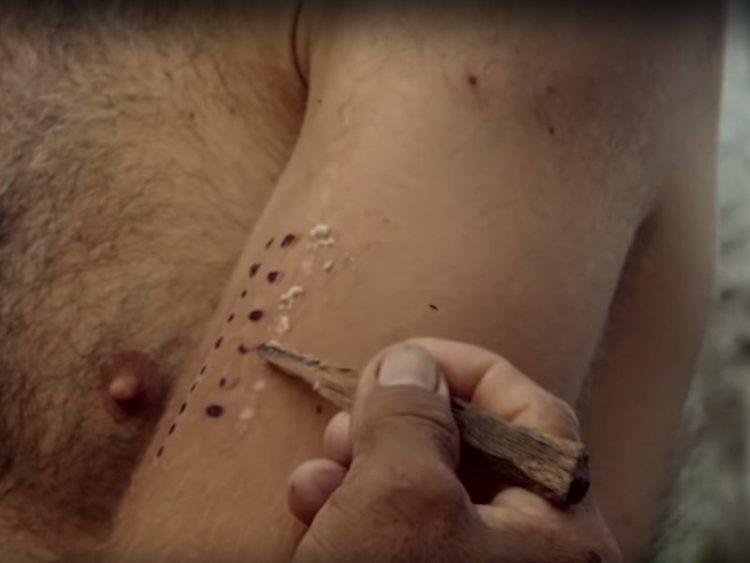Kambo is an ancient Amazonian ritual that involves putting the poisonous secretions of a frog into your body for a supposed detoxifying and health-boosting effect.
Named after the poisonous, waxy substance harvested from the backs of giant monkey frogs found throughout the Amazon, Kambo has always been a controversial cleansing ritual because of the severe side-effects od coming into direct contact with the poison of the giant monkey frog. That controversy recently reached new heights due to Australia’s investigation into the deaths of two unrelated people who had died shortly after attempting kambo. Although symptoms associated with kambo vary in severity, in some cases, they are enough to cause serious health concerns, even death.
The shamanistic ritual known as kambo has been used by the indigenous people of the Amazon rainforest to heal and cleanse the body for centuries, and it has been promoted by naturopathic practitioners for its detoxifying effects. However, unlike other, more mild methods of cleansing the body, kambo can be pretty brutal. Side effects of the ritual involve nausea, vomiting, diarrhea, loss of bladder control, dizziness, heart palpitations, and abdominal pain, among others.

Photo: Vincent Moon/YouTube
The ritual itself begins with the drinking of about a liter of water or cassava soup. Next, the person conducting the ritual uses a burning stick to create a number of small burns on the skin of the person attempting kambo, usually in the shoulder area. This creates blisters that are then peeled off, and the minor wounds are smeared with kambo, also known as sapo, the poisonous secretion of the giant monkey frog.
Proponents of kambo claim that the ritual can help with a wide range of medical conditions, from Alzheimer’s disease and cancer, to diabetes, depression, and even infertility. researchers have studied kambo for years, but so far there has been no scientific research to support the beneficial medical effects of the Amazonian practice. However, the negative side effects are well-documented.
Because the poison comes into direct contact with the flesh of the person attempting the kambo ritual, it goes straight into the lymphatic system and the bloodstream, its effects are almost instantaneous. As the poison ‘races around the body scanning for problems,’ practitioners will begin to experience a series of side effects, especially vomiting, for periods of time that can vary between 5 and 30 minutes, and up to several hours in rare cases.
After kambo, practitioners will need to consume water or tea to flush out the remaining toxin from their body, but even following instructions to the letter still leaves people exposed to risks like prolonged vomiting and diarrhea, muscle spasms, convulsions, and more.
Kambo is basically a poison, so it is banned in some countries, but it is legal in the United States but not regulated by the Food and Drug Administration or any other health organization.
The Amazonian ritual has come under scrutiny during Australia’s recent investigation into the deaths of two people, allegedly as a consequence of kambo. In 2019, Natasha Lechner set up a kambo ceremony at her house, in an attempt to manage chronic back pain. Within seconds of applying kambo on her body, she passed out, and she died just minutes later. The 39-year-old had trained as a kambo practitioner just a couple of months before her death.
In another case, 46-year-old Jarrad Antonovich died after attempting kambo at a retreat in Byron Bay, to treat a couple of chronic conditions. Witnesses said he looked unwell following the ritual, and nine or 10 hours later he was unable to walk anymore and his face was incredibly swollen. By 11:30 pm, after reportedly consuming some ayahuasca, he passed out, and paramedics could do nothing to save him.
Despite the risks associated with rituals like shamanistic rituals like kambo, people are still inclined to use them as an alternative to conventional medicine, especially if they feel let down by the latter.













